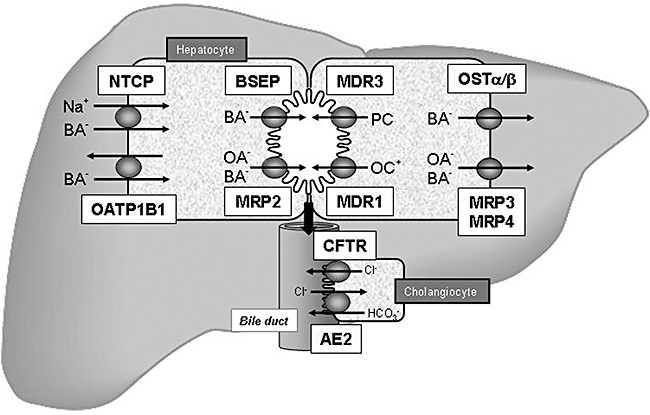Figure 2.

Hepatobiliary transport systems in the liver. Bile acids (BA-) are taken up by the Na+/taurocholate cotransporter (NTCP) and organic anion transporting protein2 (OATP2) at the basolateral membrane of hepatocytes. Monovalent BA- are excreted into bile by the canalicular bile salt export pump (BSEP), divalent BAs and anionic anions (OA-) are exported by the canalicular conjugate export pump (MRP2). The phospholipid export pump (MDR3) mediates excretion of phosphatidylcholine (PC), which forms mixed micelles together with BA- and cholesterol in bile. Cationic drugs (OC+) are excreted by the multidrug export pump (MDR1). At the basolateral membrane of hepatocytes, MRP3, MRP4 and the heteromeric organic solute transporter OSTα/β provide an alternative excretion route for BA- and other OA- into the systemic circulation. BA- secreted into bile can be reabsorbed by cholangiocytes via apical Na+-dependent bile salt transporter (ASBT) and effluxed by Ostα/β and Mrp3 (not shown). Cholangiocytes also express a chloride channel that is the cystic fibrosis transmembrane regulator (CFTR) that drives bicarbonate secrtion via a chloride/anion exchanger (AE2). Adapted from Zollner and Trauner, Wien Med Wochenschr 2006 (Zollner and Trauner, 2006).
